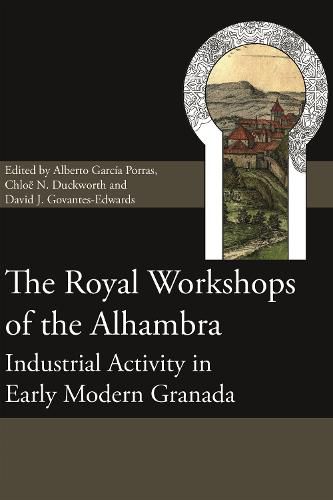Readings Newsletter
Become a Readings Member to make your shopping experience even easier.
Sign in or sign up for free!
You’re not far away from qualifying for FREE standard shipping within Australia
You’ve qualified for FREE standard shipping within Australia
The cart is loading…






The Alhambra is one of the most famous archaeological sites worldwide, yet knowledge of the complex remains very partial, focussing on its medieval Nasrid palaces. Other aspects of the site are virtually unknown, not only to the general public but to archaeologists and historians as well. The Royal Workshops of the Almambra addresses this imbalance, examining the urban and industrial zone adjacent to the palaces. Once the most densely populated and extensive area of the complex, this zone, the Secano, contained houses, tanneries, and workshops including a considerable number of pyrotechnological facilities for the production of metal, glass and ceramic items. Presenting the results of the Royal Workshops of the Alhambra (UNESCO World Heritage Site) project, the book gives a much-needed insight into the industrial sector of the Alhambra. Crucially, the project focusses on the early modern era, when the manufacture of ceramic, glass and metal actually reached their peak. The opening chapters set the archaeological work and the Secano in context and discuss the methodology for archaeological investigation of pyrotechnological activity; while further chapters present the results of the research. Drawing on both traditional and ground-breaking survey and excavation techniques, the book provides an invaluable wide-lens picture of the palatial city.
$9.00 standard shipping within Australia
FREE standard shipping within Australia for orders over $100.00
Express & International shipping calculated at checkout
The Alhambra is one of the most famous archaeological sites worldwide, yet knowledge of the complex remains very partial, focussing on its medieval Nasrid palaces. Other aspects of the site are virtually unknown, not only to the general public but to archaeologists and historians as well. The Royal Workshops of the Almambra addresses this imbalance, examining the urban and industrial zone adjacent to the palaces. Once the most densely populated and extensive area of the complex, this zone, the Secano, contained houses, tanneries, and workshops including a considerable number of pyrotechnological facilities for the production of metal, glass and ceramic items. Presenting the results of the Royal Workshops of the Alhambra (UNESCO World Heritage Site) project, the book gives a much-needed insight into the industrial sector of the Alhambra. Crucially, the project focusses on the early modern era, when the manufacture of ceramic, glass and metal actually reached their peak. The opening chapters set the archaeological work and the Secano in context and discuss the methodology for archaeological investigation of pyrotechnological activity; while further chapters present the results of the research. Drawing on both traditional and ground-breaking survey and excavation techniques, the book provides an invaluable wide-lens picture of the palatial city.